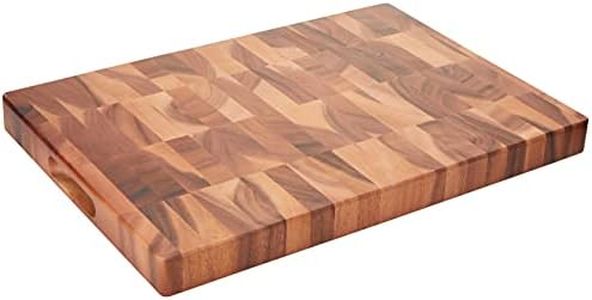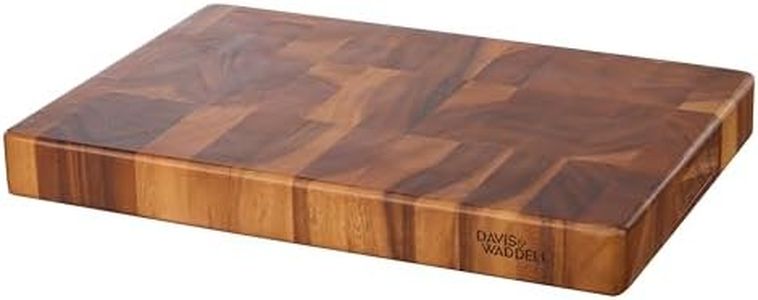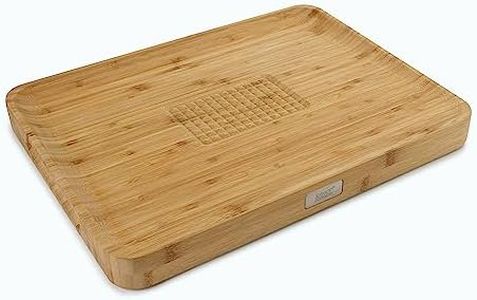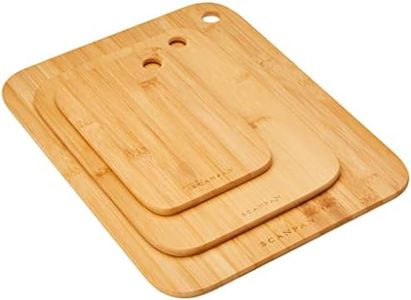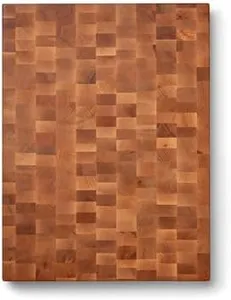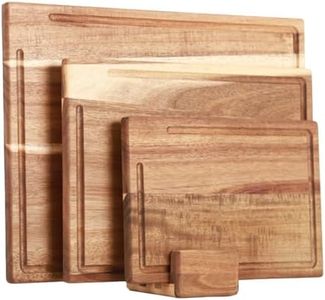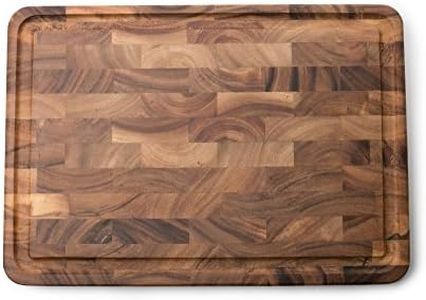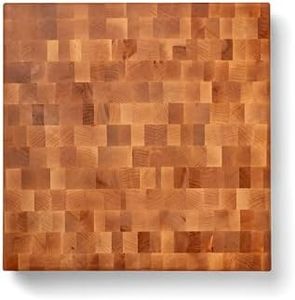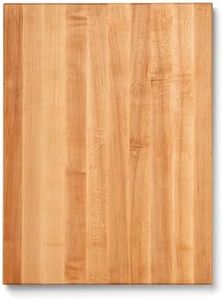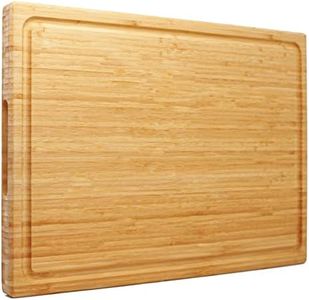We Use CookiesWe use cookies to enhance the security, performance,
functionality and for analytical and promotional activities. By continuing to browse this site you
are agreeing to our privacy policy
10 Best Wood Chopping Board
From leading brands and best sellers available on the web.Buying Guide for the Best Wood Chopping Board
Choosing the right wood chopping board is all about matching your cooking habits and kitchen style to a board that will last long, be gentle on your knives, and is easy to care for. While all chopping boards serve the same purpose, the specific materials and details can impact how well they suit your needs. By understanding key features, you can find a board that fits your kitchen routine and keeps food prep safe and efficient.Wood TypeThe type of wood affects the board's durability, maintenance needs, and how kind it is to your knife blades. Hardwoods like maple, walnut, and cherry are common; they're tough and can withstand years of use without too much wear. Softwoods, on the other hand, are generally less durable but may be lighter or cheaper. If you cook frequently and want a long-lasting board, stick to hardwoods, but occasional cooks may be fine with softer options.
Grain ConstructionWooden boards are typically made with end grain or edge grain construction. End grain boards show the cut ends of wood fibers, which means they 'heal' from knife nicks better and are gentler on blades, making them great for frequent cooks or heavy chopping. Edge grain boards have the sides of the wood facing up; they're usually more affordable and still sturdy, though a bit less forgiving to knives. Think about how much chopping you do and the importance of knife care to you when choosing.
Size and ThicknessThe size and thickness of a chopping board impacts how much space you have for food prep and how stable the board is. Larger boards offer more cutting area, which is great if you cook for many people or often prep multiple ingredients, but they take up more counter and storage space. Thickness affects how sturdy and durable the board feels; boards about 1.5 to 2 inches thick are the most stable, while thinner boards may be easier to move and store but can warp more easily. Think about your kitchen space and how you like to cook when picking a size.
Maintenance RequirementsWooden boards need regular maintenance—usually oiling—to keep them from drying out, warping, or splitting. Some woods and grain types require more frequent care. If you want a board that needs less upkeep and are okay with replacing it more often, you can choose a simpler design, but for those who want longevity, be prepared for some routine maintenance. Consider how much time you're willing to spend taking care of your board.
Juice Grooves and FeaturesSome boards come with juice grooves, handles, or non-slip feet. Juice grooves catch liquids from fruits, meats, or vegetables, which can help keep your counter clean if you do a lot of food prep with juicy ingredients. Handles are handy for moving or serving, while non-slip feet improve stability and safety during chopping. Decide if these extras fit your cooking habits or whether a simple flat board is enough for your needs.
